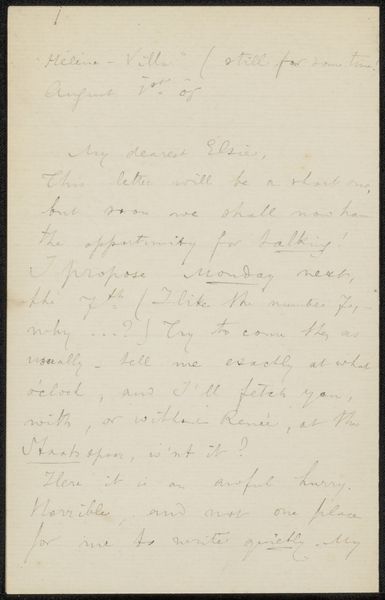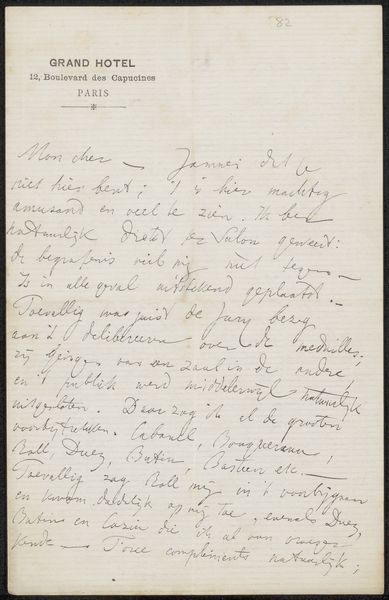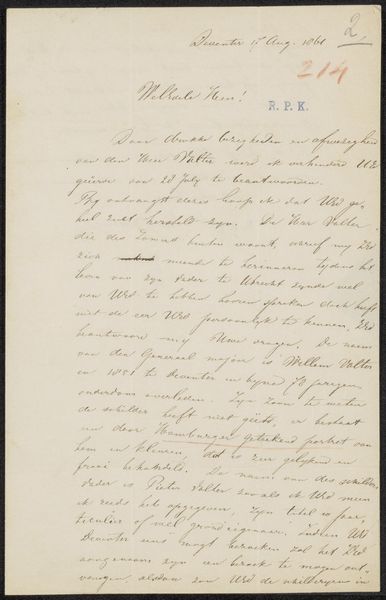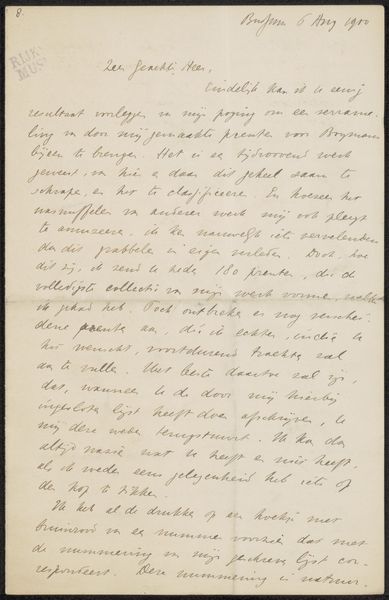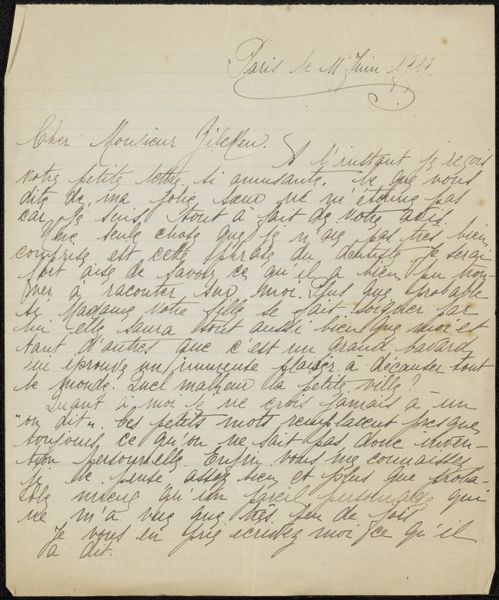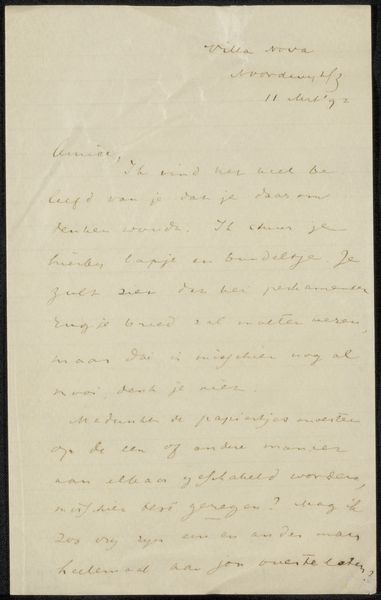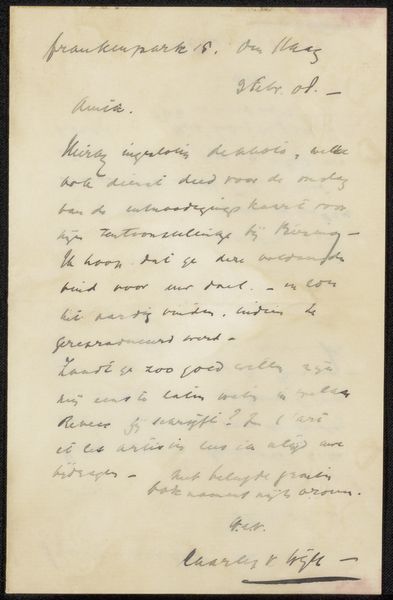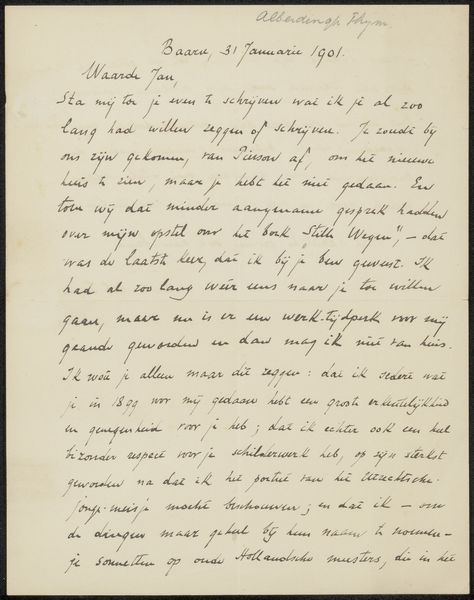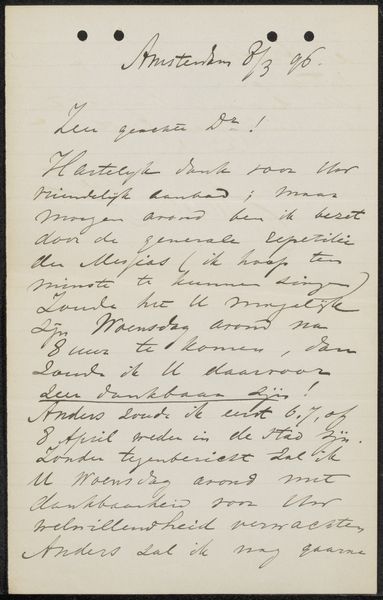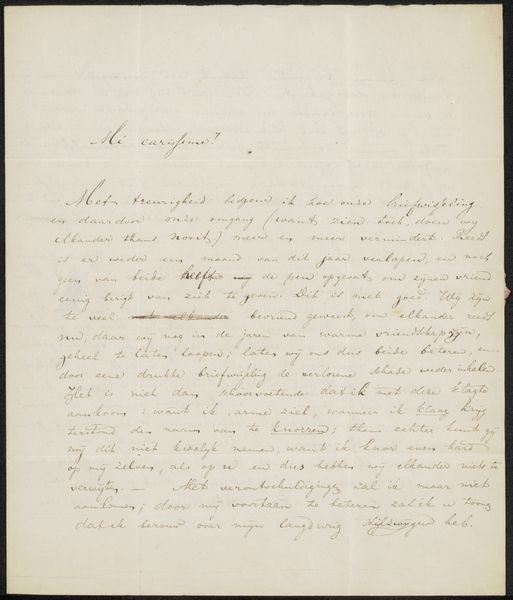
drawing, paper, ink, pen
#
drawing
#
paper
#
ink
#
intimism
#
pen
Copyright: Rijks Museum: Open Domain
Curator: So, here we have Philip Zilcken's "Brief aan Elsie Maud Cownie," likely from 1906-1907. It's ink on paper, a seemingly simple letter. What strikes you about it? Editor: Well, it feels very intimate. I like the casual nature of a handwritten letter being considered art, almost like a snapshot of a moment. I'm curious, what is your interpretation of it? Curator: From a materialist perspective, the letter is more than just words. The paper itself, the ink used, the very act of handwriting—these are all deliberate choices, materials shaped by Zilcken's hand and available resources. What sort of ink do you think he used and how available would it have been? Editor: Probably something fairly accessible at the time, I imagine. Did the specific ink used have any bearing on its artistic reception, though? Curator: Precisely! This elevates everyday labor to the realm of art. It challenges the traditional hierarchy where painting or sculpture might be considered "higher" forms, simply because they require different, sometimes scarcer materials, or a "trained" skill. Consider, too, Elsie Maud Cownie; she likely had specific access to material (paints and canvases) because she herself was an artist. Editor: So, you’re saying the act of creating this, with these accessible materials, speaks to something beyond just the personal message. It highlights a connection with work? Curator: Yes! It reflects the broader culture of letter writing, the availability of materials like paper and ink. Moreover, it underscores labor. We can also consider who *wouldn't* have had access to these basic, now cheap, writing materials, thus examining historical context to better appreciate its inherent values. Editor: I never considered that aspect before. I was so focused on the emotional tone, but viewing it through the lens of material and labor changes my perspective completely. It’s not just about the message; it’s about the means of conveying it, and who had access to that means. Curator: Exactly! The mundane transformed through process and accessibility.
Comments
No comments
Be the first to comment and join the conversation on the ultimate creative platform.
